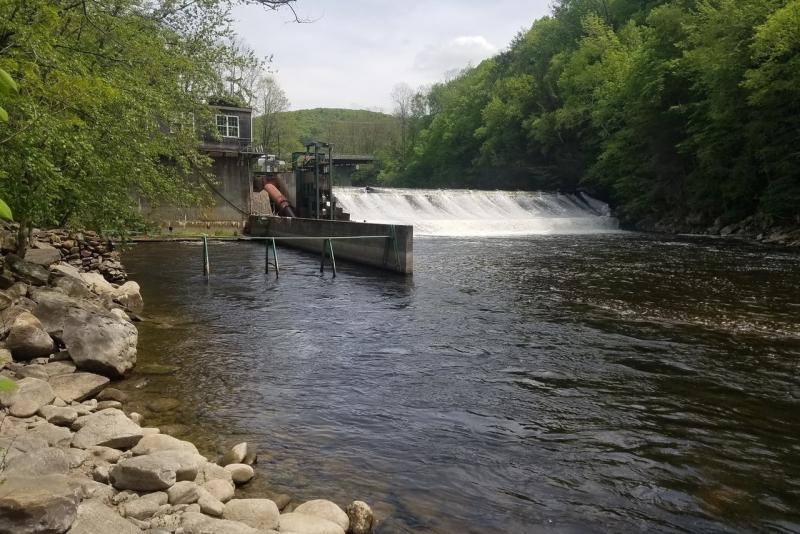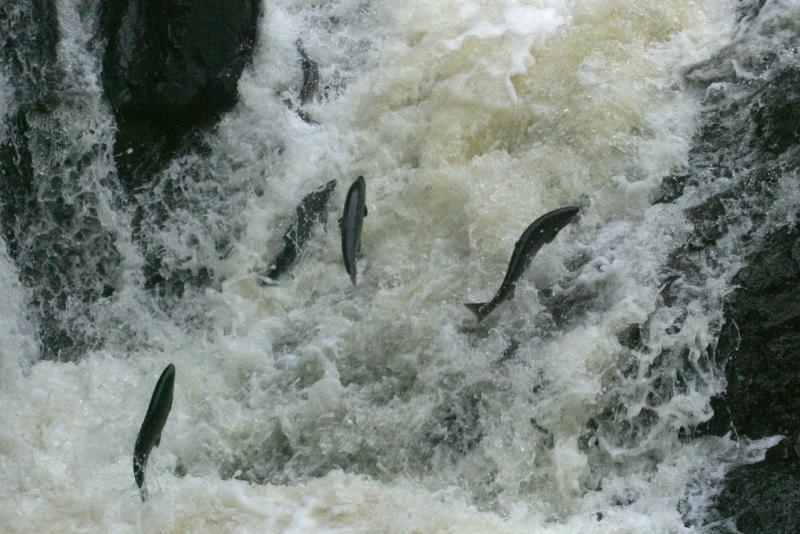Big rivers with big dams get big attention. For example, the Penobscot River, New England’s second largest river, underwent a multi-million dollar, large-scale restoration project between 2004 and 2016. Work involved removing two dams, installing a fish lift, and constructing a nature-like bypass. The project opened up almost 2,000 miles of rivers and streams to many species of sea-run fish, including endangered Atlantic salmon, as well as river herring and American shad.
But when we evaluate habitat restoration, we look beyond the size of the river. We also evaluate many factors to figure out where we can get a good return on investment:
- Available spawning and nursery habitat.
- Previous dam removals, especially downstream barriers.
- Likely future dam removals.
- Stocking efforts to jumpstart population recovery.
- Current power generation on existing dams.
Restoring Connecticut River Tributaries
Some tributaries, like the Ashuelot River in southwest New Hampshire, have high restoration potential. It feeds into the larger Connecticut River and has a wide variety of habitats, including riffles, deep pools, long runs, and warm water ponds. Before 2001, the river had six dams blocking fish passage. With the support of the NOAA Fisheries Restoration Center, three dams were removed (2001, 2002, and 2010), and now only three remain on the Ashuelot. We are now working with the three federally licensed hydroelectric projects to improve fish passage.
As part of the habitat plan for shad, the Ashuelot River receives 300-400 stocked American shad each year. These prized fish, roughly 12-20 inches long with blue-green backs, are notoriously picky about river flows. Removing dams and improving fish passage can make a huge difference in their success. The last American shad coastwide stock assessment in 2007 showed that populations were at an all-time low. However, we have confidence that our dam removal and fish passage improvement efforts will go a long way toward restoring these sea-run fish populations.

In order to remove dams, we need to build community support. NOAA representatives often attend community meetings to help answer questions about the removal process and explain the ecosystem benefits of restoring fish populations. Improving and adding fish passage at the three licensed dams, along with the previous dam removals, will allow fish to reach 43 river miles of high-quality upriver spawning and rearing habitat to many species of sea-run fish, including American shad.
Merrimack River Watershed
In addition to this project, we are working on three tributaries in the Merrimack River watershed. They also have high restoration potential for migratory fish:
-
On the Shawsheen River, one of the first tributaries on the Merrimack, we were instrumental in the removal of two dams and we continue to explore removing a third dam.
-
On the Concord River, we are working with a small hydropower operator to improve passage and exploring the feasibility of removing the next upstream dam.
-
On the Nashua River, we have engaged in the relicensing of a project named Mine Falls and we have requested studies to better understand the project’s impacts to migratory fish.
Reopening Rivers in Maine
Nearby in Maine, we have identified the Little Androscoggin River as a tributary that has a great deal of spawning and rearing habitat for blueback herring and shad. These species tend to spawn and rear in free flowing water. There is also habitat for alewife because of several lakes that provide excellent spawning and rearing habitat which are connected to this important tributary.
We are working with the three federally licensed facilities on this river, none of which currently provide upstream passage for migratory fish. We will open up previously inaccessible habitat for several sea-run migratory species. We are also working on several dam removal projects on the Sabattus River, another tributary to the Androscoggin. All of these projects can help bring back many sea-run fish populations, including extremely endangered Atlantic salmon.

Restoring Habitats Requires Joint Efforts
Within NOAA Fisheries, this is a joint effort of ecologists, fisheries biologists, and engineers working together. We also rely heavily on our state and local partners to assist in the restoration of sea-run fish populations. These fish are not only targets for anglers, but are also important prey for popular commercial fish, such as Atlantic cod, striped bass, and tuna. They are also prey for marine mammals, seabirds, river otters, and bald eagles.
When we remove dams and improve fish passage, the results can be amazing. Even after 200 or more years of being blocked from their historic spawning and rearing habitats, the fish come back to the rivers and streams. And, when the fish populations come back, they help restore a whole ecosystem.
Every tributary has its own set of unique circumstances and history, and there is no one-size-fits-all solution. We work with each habitat, each dam, and each license-holder to develop viable solutions for these smaller rivers and streams.
For more information on this topic, please contact Bill McDavitt, Hydropower and Ecosystem Services.


